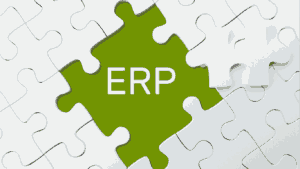Executive Summary
Finance leaders are navigating an environment of heightened volatility, regulatory scrutiny, and demand for agility. Traditional ERP systems—SAP ECC, Oracle E-Business Suite, and similar legacy platforms—have long supported core financial processes but fall short in providing the real-time insights required today.
Modern ERP platforms such as SAP S/4HANA and Oracle Fusion Cloud ERP transform finance into a proactive partner to the enterprise. They enable real-time close, predictive forecasting, dynamic scenario modeling, and continuous compliance monitoring—capabilities that directly support CFOs, Finance Directors, Chief Accounting Officers, and FP&A leaders in driving strategic decisions.
The difference is clear: where legacy systems force finance into a reactive, rear-view role, next-generation ERPs empower finance to operate as a forward-looking co-pilot of the business.

Finance leaders today are expected to deliver sharper insights, mitigate risks proactively, and support enterprise agility. Yet many organizations remain constrained by outdated ERPs, fragmented data sources, and long reporting cycles. The result: limited visibility, reactive decision-making, and missed opportunities.
Modern ERP platforms offer a step-change for the finance function. By enabling real-time access to financial and operational data, these platforms allow finance leaders to drive timely, fact-based decisions across the enterprise.
Why Real-Time Finance is Non-Negotiable
The finance function has evolved from record-keeping to strategic enablement. Finance leaders today are asked not only to “close the books” but also to:
- Manage liquidity dynamically across multiple markets and currencies
- Support scenario modelling for M&A, divestitures, restructuring, or capital allocation
- Support board-level decisions with on-demand insights
- Assure compliance globally while reducing reporting cycle times
Real-time data and automation are now critical to delivering these outcomes. Legacy ERPs—such as SAP ECC or Oracle E-Business Suite—often force finance teams into batch processing, reconciliations, and periodic closes. By the time reports are ready, decisions are already outdated. Next-generation ERP eliminates those delays with real-time integration, in-memory processing, and embedded analytics.
Key Capabilities of ERP for Finance
1. Integrated Financial Management
2. Continuous Close and Real-Time Consolidation
3. Predictive Analytics for FP&A
4. Regulatory Compliance and Audit Readiness
5. Cash Flow and Working Capital Optimization
Legacy ERP vs. Modern ERP for Finance Leaders
| Scenario | Legacy ERP (SAP ECC, Oracle E-Business Suite, etc.) | SAP S/4HANA | Oracle Fusion Cloud ERP |
|---|---|---|---|
| Financial Close & Consolidation | Month-end close takes 10–15 days with heavy reliance on spreadsheets and manual reconciliations. Consolidations delayed by currency and intercompany adjustments. | Universal Journal integrates ledgers, enabling real-time postings and near-continuous close. Close cycle reduced by 40–60%. | Automated consolidations with built-in currency translation and eliminations. Board-ready financials delivered days earlier. |
| Cash Flow & Working Capital | Forecasting is backward-looking, delayed by siloed inputs from procurement and treasury. Cash visibility fragmented across regions. | Embedded Treasury and Risk Management provides real-time receivables/payables and liquidity views. Instant impact analysis of FX or payment delays. | AI-driven Cash Management predicts inflows/outflows, enabling proactive working capital allocation and credit renegotiation. |
| Scenario Planning & FP&A | Forecasting based on offline Excel, static models, and delayed actuals. Scenario testing limited and reactive. | Integration with SAP Analytics Cloud enables real-time simulations (e.g., energy cost hikes, supply chain delays) with live ERP data. | Fusion ERP + EPM enables rolling forecasts and dynamic scenario modeling, continuously updated from operational data. |
| Compliance & Audit Readiness | Reactive compliance checks with extensive manual audit sampling. Risk of inconsistent reporting across jurisdictions. | Automated controls, audit trails, and continuous monitoring enforce IFRS/GAAP/SOX compliance. Audit prep time halved. | Real-time compliance dashboards and configurable controls enable continuous monitoring across regulated industries. |
| Profitability & Risk Insights | Profitability reporting delayed until weeks after quarter-end. Limited drill-down into customer/product performance. | Real-time margin analysis down to transaction level. CFOs can act mid-quarter to address underperforming segments. | Embedded analytics highlight risk exposure (e.g., overdue receivables in risky geographies), enabling proactive interventions. |
Common Challenges and Missteps
Despite the clear benefits, many finance transformations struggle to deliver value due to:
- Over-customization that recreates legacy inefficiencies in a new platform, creating technical debt
- Insufficient change management, especially among finance users accustomed to legacy processes
- Delayed integration with operational systems, which limits visibility into the full enterprise picture
- Underestimating data governance, which undermines trust in financial reporting and operational insights
Best Practices for Finance Leaders
1. Anchor ERP Transformation to Finance Strategy
2. Invest in Data Quality and Governance Early
3. Prioritize User Experience for Finance Teams
4. Leverage Cloud and AI Innovations
5. Establish a Finance-IT Operating Model
The Strategic Payoff
For CFOs and Finance Directors, modern ERP is not just an IT upgrade—it is a strategic lever to reposition finance as a partner to the business. Real-time insights empower finance leaders to:
- Support strategic decision-making at the speed of business.
- Enhance shareholder confidence with accurate, timely disclosures.
- Enable business units with predictive analytics for growth.
- Reduce the cost of finance through automation and efficiency gains.
Conclusion
Finance leaders are at the forefront of guiding their organizations through complexity, volatility, and transformation. ERP platforms built for real-time finance can unlock significant value—turning finance from a back-office function into a strategic enabler.
The question is no longer “Should we modernize ERP?” but “How quickly can finance lead the transformation to real-time decision-making?”


